Best Marshall amps 2025: Our pick of amps for rock and beyond from Marshall's full range
From bedroom-friendly combos, to stage-ready heads, we count down the best Marshall amps you can buy right now
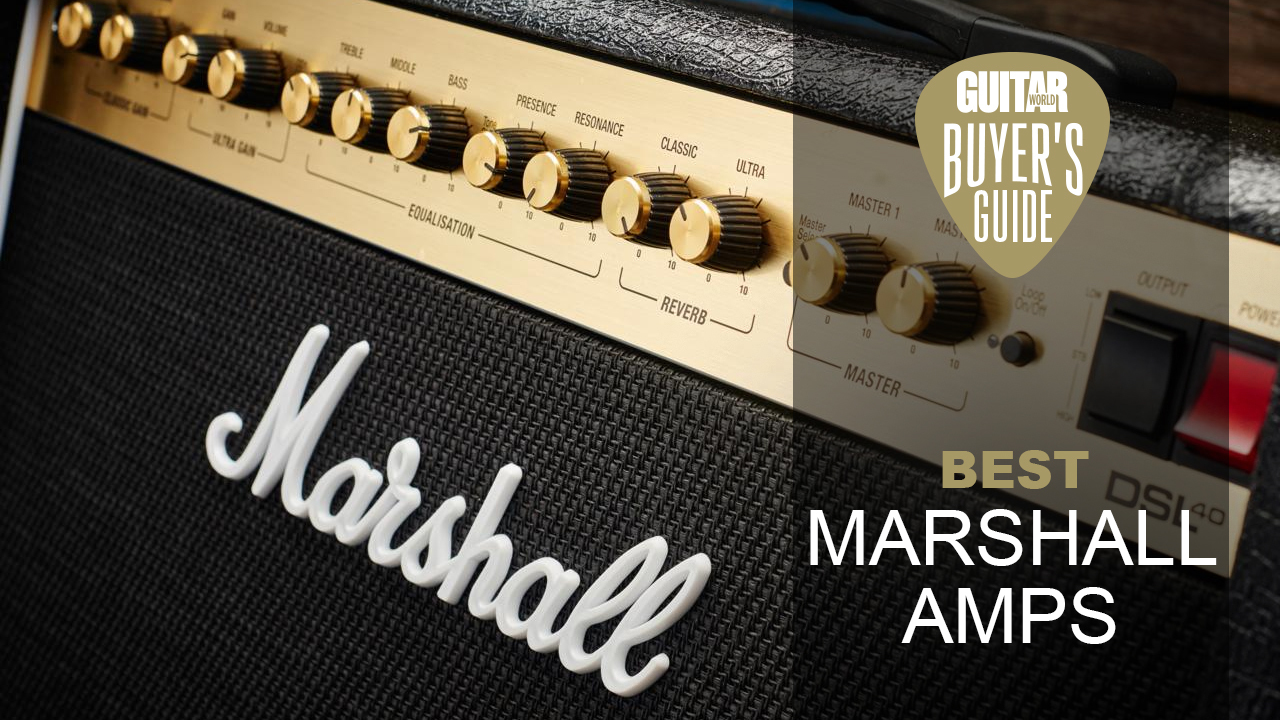
Fewer brands epitomize the essence of rock and roll more than Marshall. For decades, they’ve been the choice of players around the globe, but what are the best Marshall amps? If you’re just starting out and learning the guitar in your bedroom, then it’s likely to differ from what a gigging musician would choose.
Jim Marshall started the company in the 60s and actually used a Fender Bassman as a guide amp. Due to the different materials available to him at the time, the amp he ended up making – the JTM45 – was a very different animal from the Fender it copied. The components he used meant the amp’s voicing sounded different and, arguably more importantly, broke up sooner than the Fender. It’s this breakup sound that eventually helped Marshall gain (pun intended) the reputation it’s so well known for today.
Marshall makes a wide range of amps today. The classic Marshall crunch is still sought after by many players, though clean players and those that use heavier, more saturated sounds are also catered for. Whatever style of player you are, the best Marshall amps will help you sculpt your sound to your liking.
From bedroom practice amps to old-school reissues, and assertive heads with enough power to fill the biggest venues, here is what we reckon are the best Marshall amps available to players today, covering all budgets – so join us as we count down the best Marshall amps for beginners and pros alike.
Best Marshall amps: Guitar World’s choice
The best Marshall amp will depend on what you want out of it, however, with its wide range of tones, modest price point and all-tube construction, we can’t ignore the DSL40CR. It’s got two separate channels with two voices within each, that cover clean, crunch and more distorted sounds making it ideal for pretty much any player. The in-built reverb sounds great, and at 40W, it’s perfect for gigging, recording or even just playing at home.
For those that need something more refined, check out the JVM205C. It’s part of Marshall’s flagship range that caters for players that want a professional-grade amp that can cover all ground. Whether you want ultra clear clean tones, or mega saturation, it’s got you covered.
Best Marshall amps: Product guide & reviews
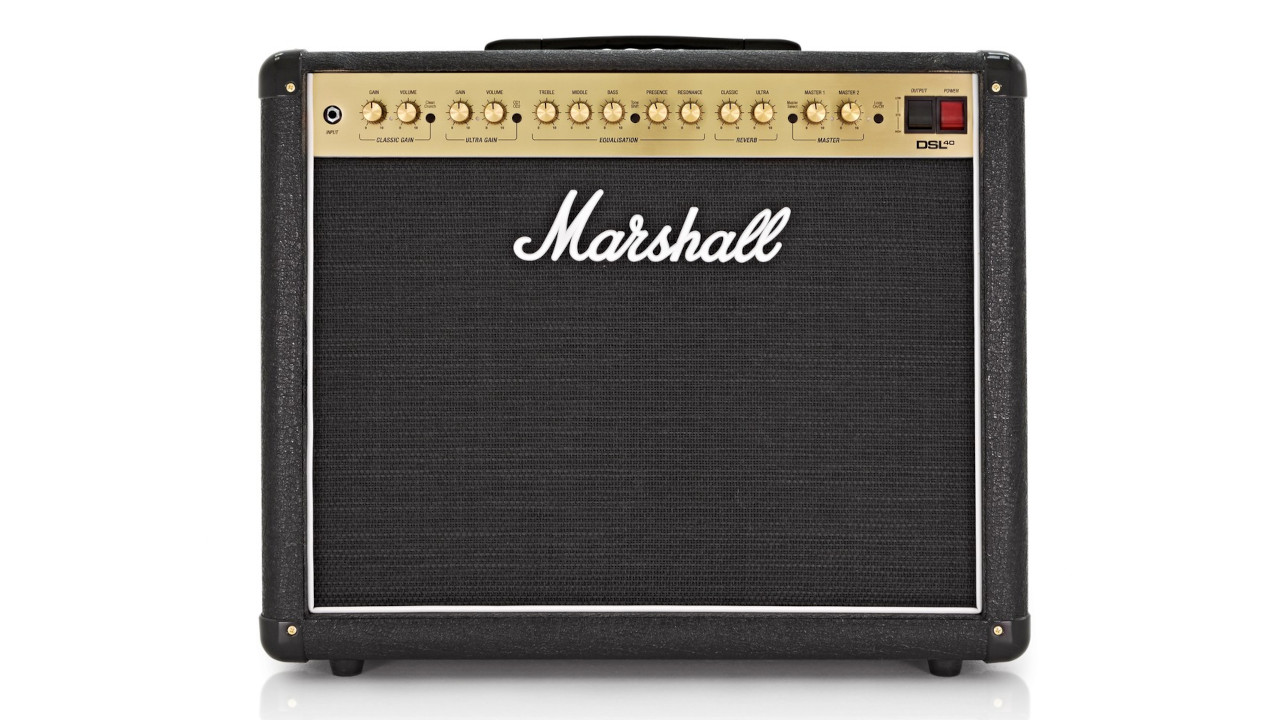
1. Marshall DSL40CR
Our expert review:
Specifications
Reasons to buy
Reasons to avoid
Regardless of what you need, the Marshall DSL40C has to be considered one of the best Marshall amps available. It’s an all-tube amp, so you get the response, dynamics and tone that comes with that. It’s got two independent channels, but within each one, you’ve got two different sounds. The first channel covers clean and old-school crunch tones, and the second channel has two different overdriven sounds that cover heavier sounds.
The amp is rated at 40W, meaning that it will have you covered in most gigging scenarios, however, you can knock the output down to 20W making it better suited to recording and playing at quieter volumes, without losing any of your tone. Unlike the old-school Marshall amps, this does have a master volume control though, so you can always use that. There are actually two master volume controls which means you can use them as a boost.
Alongside the regular EQ section, there’s a tone shift button which essentially acts as a mid-scoop when engaged, there are reverb controls for each channel, and an effects loop. It’s packed full of features, and it sounds great.
Read our full Marshall DSL40CR review
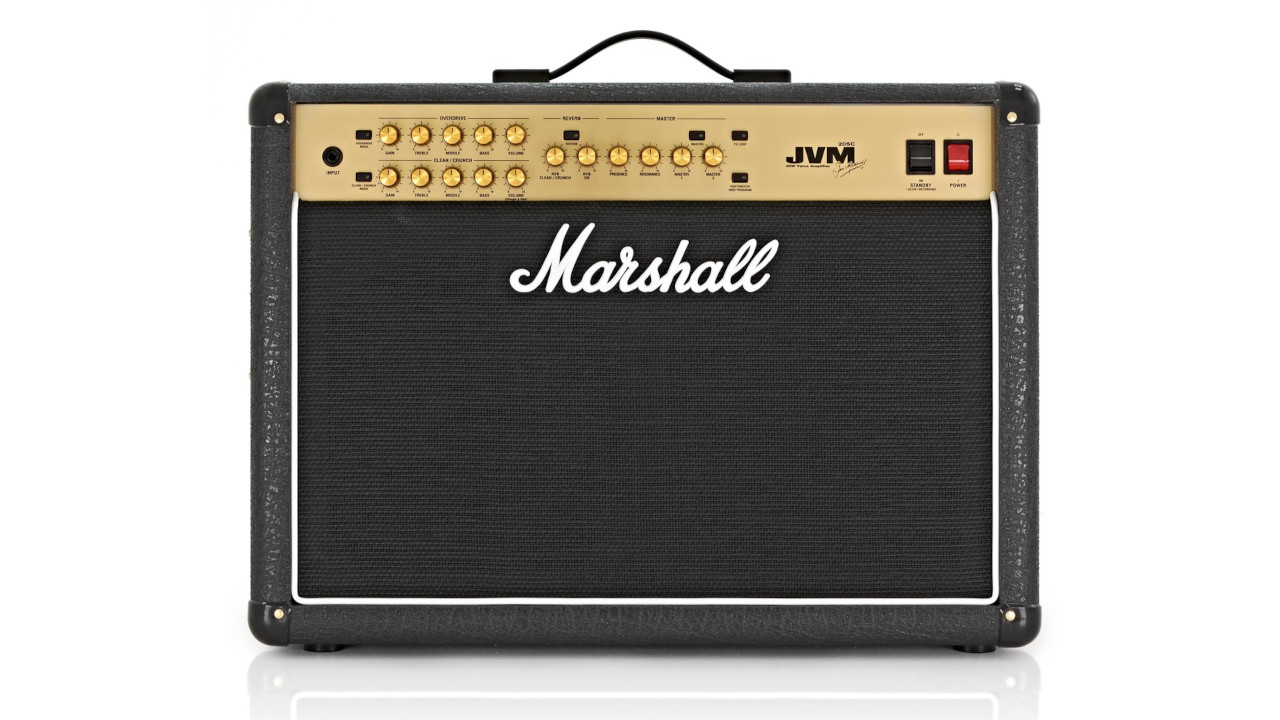
2. Marshall JVM205C
Our expert review:
Specifications
Reasons to buy
Reasons to avoid
You’ll see JVM series guitar amps played by some professional players, and it’s no surprise why – they’re incredible. You get a fair bit of clean headroom, and you can forget all the dated preconceptions about Marshall amps not having a great clean sound, because the JVM205 has a beautiful clean channel. You’ve then got Plexi-style overdrive, as well as JCM-800 style crunch, and saturated high gain sounds, ideal for modern and classic metal.
It’s a two-channel amp, but each channel has three different sounds within it giving you six different tones at your disposal. These are foot switchable too, making it the perfect live performance amp. Alongside these incredible amp tones, you’ve got a studio quality reverb and two master volume controls.
This is a 2x12 combo so it’s not a small amp, but it’s still more compact than a half stack, and it will mean that you can push out a lot of air when you need to. There’s also an emulated line output on the back making it easy to send a signal to front of house.
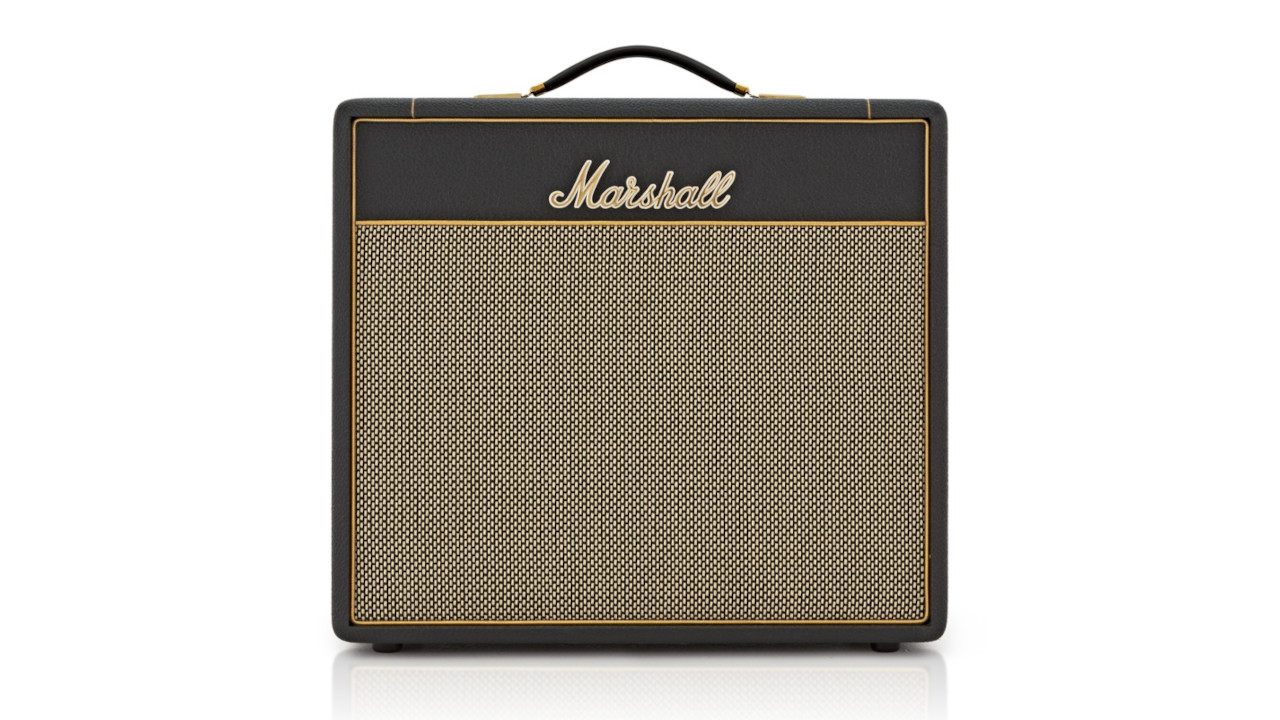
3. Marshall Studio Vintage SV20C
Our expert review:
Specifications
Reasons to buy
Reasons to avoid
The original Plexis are great – they helped shape rock'n'roll as we know it, and many legendary players still turn to them as their amps of choice. However, they’re not always practical – to get that famous Marshall crunch you need to crank the volume, which, with a 50 or 100 tube amp isn’t always possible.
The Marshall Studio Vintage is basically the same amp as a 1959 Super Lead, but it’s 20W, instead of 100 and can be knocked down to 5W. Like the original you still need to drive the volume to get that glorious breakup, but at 5W it’s a whole lot more manageable, allowing you to dial it in in small club and pub sized venues. It’s a great little combo, fitted with a 10” Celestion VT-Junior speaker making it more portable than a massive head and a 4x12.
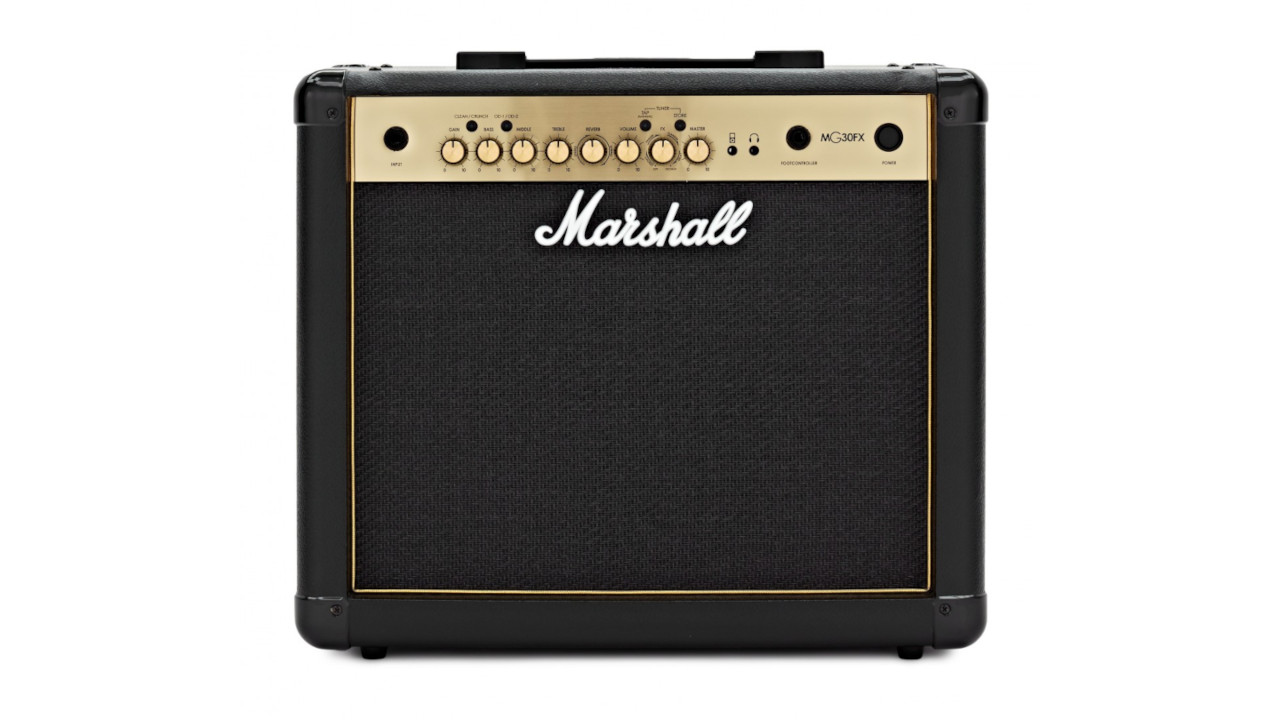
4. Marshall MG30GFX
Our expert review:
Specifications
Reasons to buy
Reasons to avoid
This is the best Marshall amp for beginners, though more experienced players might like it as a home practice amp while their other amp is at the rehearsal space. It’s a 30W solid state amp with two channels, each with two different voicings. There’s the clean/crunch channel which does exactly what it says on the tin, and OD1/OD2 which gives you two different flavors of distortion.
It’s a versatile Marshall amp and caters for any playing style from pop to metal. There are five effects onboard that can be utilized alongside three different reverbs, so it’s great for delving into all sorts of different sounds and sonic textures. At 30W, you’ll have enough volume for jamming with friends and even some small gigs. There’s an aux in for jamming along to music and a headphone output for silent practice.
Finished with the iconic gold on black aesthetic, the MG30GFX gives you classic Marshall tones for a great price.
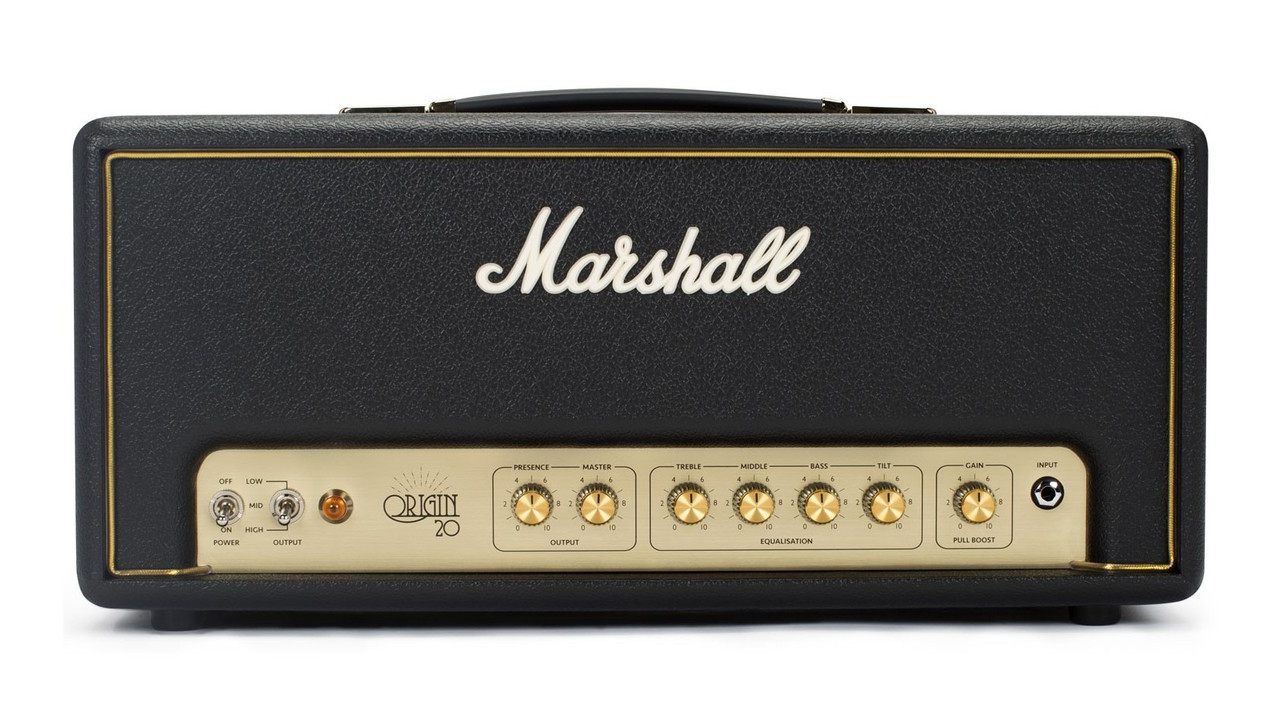
5. Marshall Origin 20H
Our expert review:
Specifications
Reasons to buy
Reasons to avoid
While it’s not a faithful replica of the old Plexis (look at the Marshall SV20 if you want that), there’s no denying the Marshall Origin has been inspired by the hallowed models of the mid to late 60s.
It’s super easy to use and, unlike the 60s amps, this has a master volume control so you can dial in your gain separately without having to dime the volume. That said, this thing does sound better loud, but with it being 20W, you can do that without being kicked off stage by the sound engineer – plus you’ve got the option of knocking the output down to around 3W and even 0.5W.
You can get some really nice clean sounds although the Origin excels at the classic mid-gain classic rock sound. Pull on the gain knob though and you get a little extra boost which is handy for solos. On the back of the amp you’ll find an FX loop as well as a DI output.
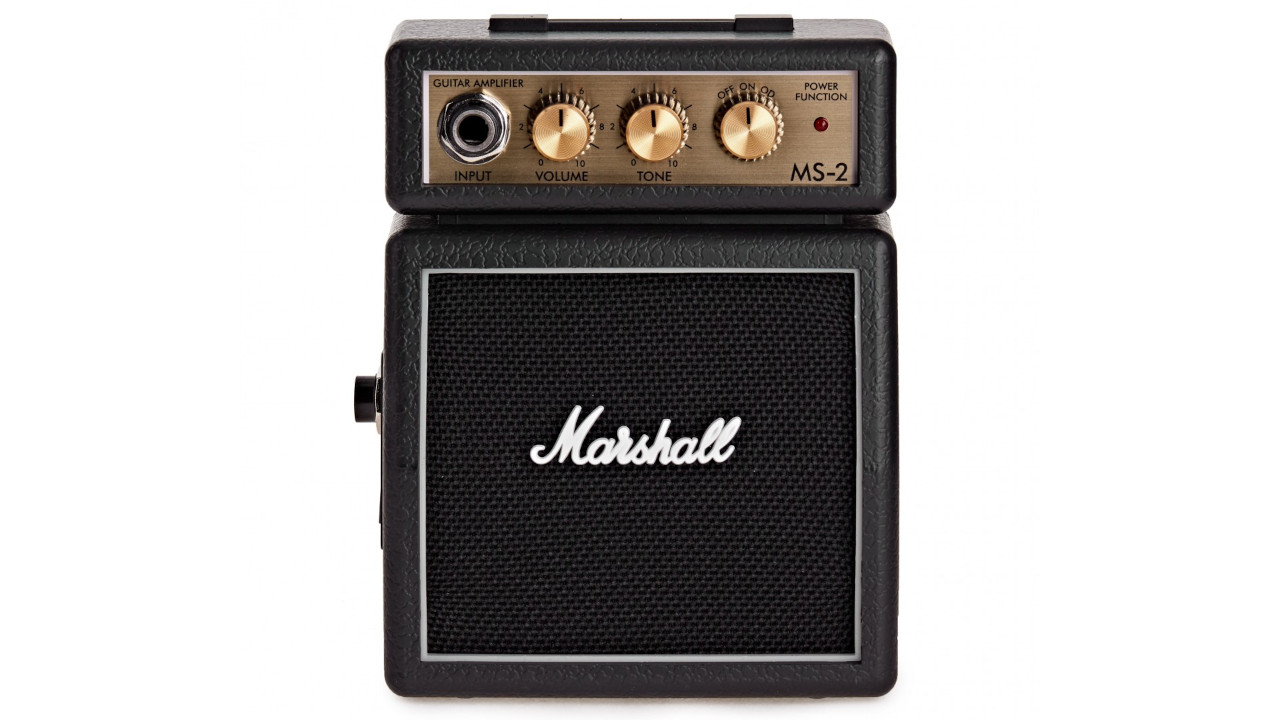
6. Marshall MS-2
Our expert review:
Specifications
Reasons to buy
Reasons to avoid
Ever wanted a Marshall amp to play on the go? Of course you have! This Mini Marshall stack can either be powered using a 9v battery or with a pedal power supply, meaning you can stick it on your belt or attach it to your guitar strap and you’ve got portable amplification.
While it’s a cool party trick, the Marshall MS-2 isn’t just a novelty amp – it’s actually a decent little practice amp as it doesn’t take up much space, can’t get too loud and gives you both clean and overdriven sounds. If you’ve got a big amp you use for gigging and rehearsing, then the MS-2 can be the quiet practice amp used at home – it doesn’t even take up much space on a desk.
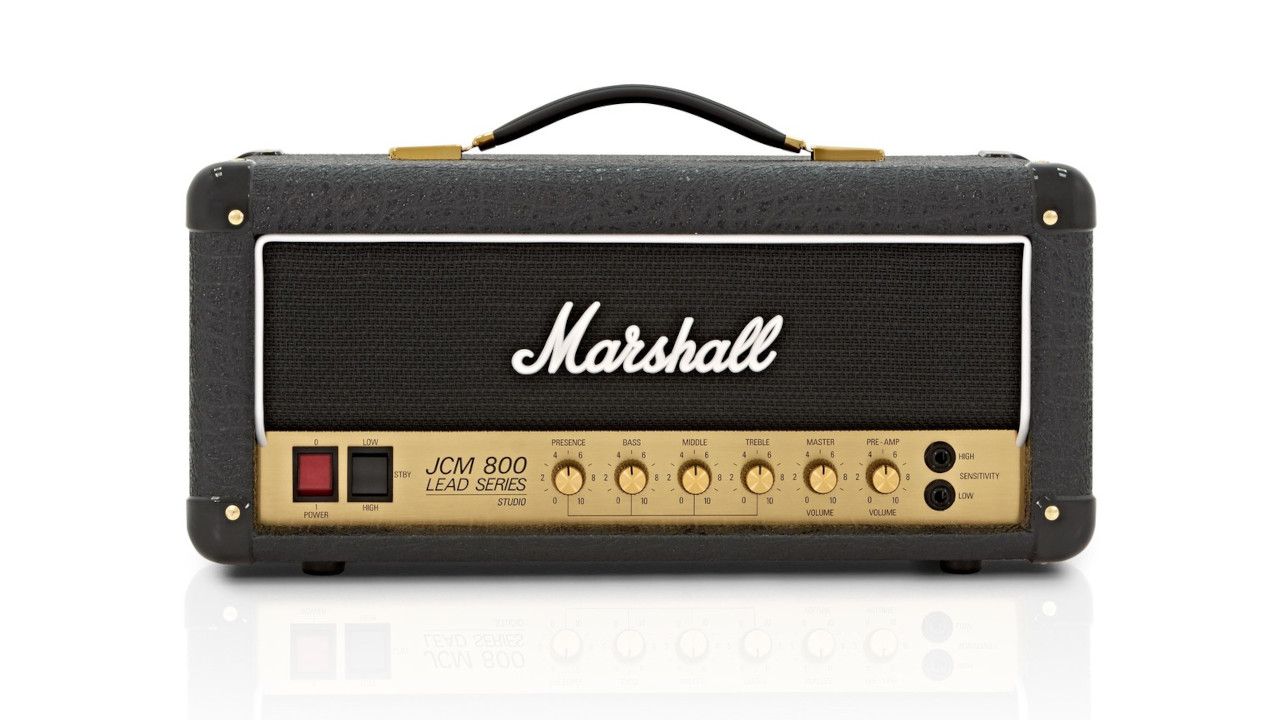
7. Marshall Studio Classic SC20H
Our expert review:
Specifications
Reasons to buy
Reasons to avoid
The JCM800 is just as iconic as the old Plexis. The sound of 80s rock wouldn’t be the same without it. The Marshall Studio Classic is essentially just a scaled down JCM800, with an output power of 20W, instead of 100. It’s still very loud so you shouldn’t have any problems in terms of volume, but it’s a lot more manageable in venues where a lower stage volume is preferable (i.e. most of them). You can even lower the output to 5W so you can really push the tubes without the deafening volume.
Like the original, it’s super easy to use with a simple control panel. You get some of the best rock tones simply by cranking the pre-amp knob though if you want more, stick a boost or overdrive pedal in front of it and it will scream. In line with making things a little more modern, Marshall have added an effects loop and DI output.
Read our full Marshall Studio Classic SC20H review

8. Marshall CODE50
Our expert review:
Specifications
Reasons to buy
Reasons to avoid
The CODE series is Marshall’s lineup of modelling amps. Within the CODE50, you’ve got a digital emulation of nearly every type of Marshall amp ever built – from old Plexis, through JCM800s, to modern JVMs. No matter what sort of sound you’re chasing you’re sure to find it in here.
It comes loaded with 100 presets, 14 MST preamps, 4 MST power amps and 8 MST speaker cabinets so you can mix and match to experiment with different sounds. There are also 24 effects built into the CODE50, five of which you can use simultaneously allowing you to use modulation, reverb, delay and distortion all at once. The amp can be used alongside a mobile app too, which makes tweaking your tone that bit easier.
With 50W of power and a 12” speaker, the amp can push out some volume – you’d be covered for jamming with friends and probably small gigs too, provided your drummer isn’t too loud.
Read our full Marshall CODE50 review
Best Marshall amps: Buying advice
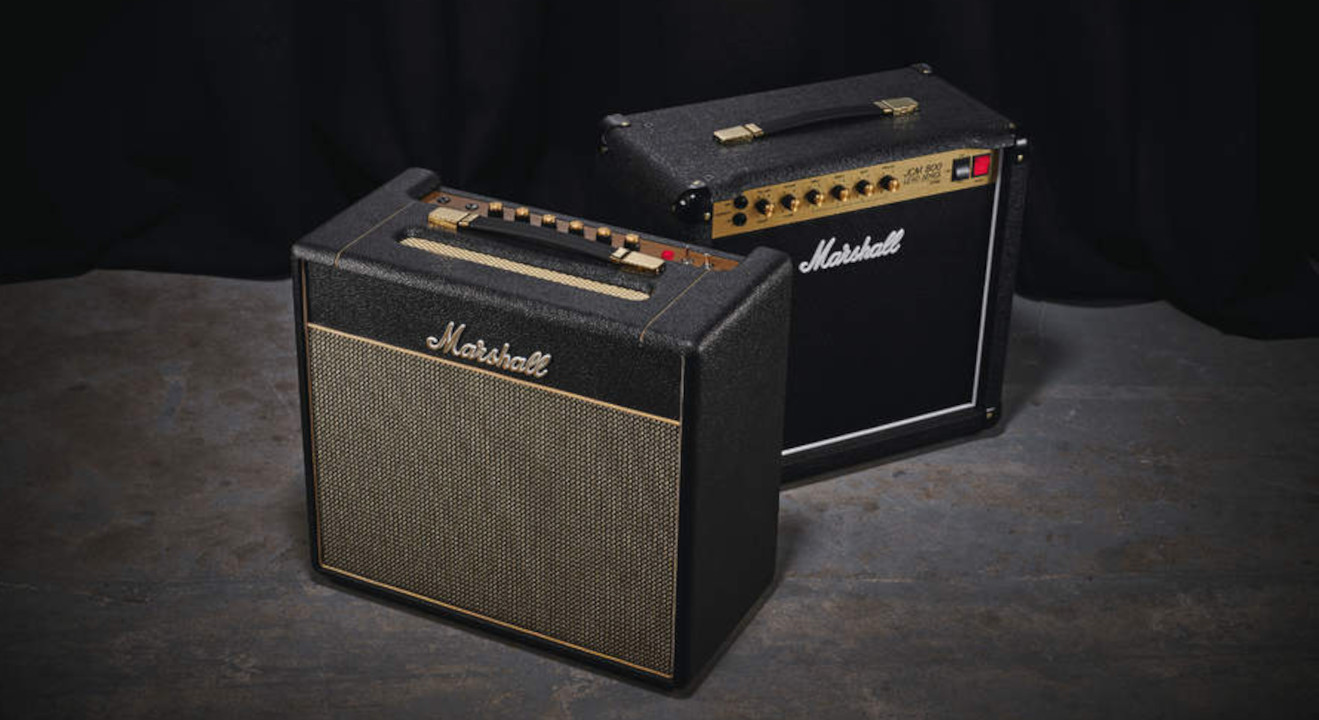
When looking for the best Marshall amp, it’s worth making a few considerations to help you get the most for your money. With different players looking for different things, asking yourself a few questions about how and where you’re going to be using the amp can help you pick the right one for you.
Solid state and modelling vs tube amps
You can trust Guitar World
Within our list of the best Marshall amps there are solid state, modelling and tube amps, all of which have certain characteristics that players love. Tube amps are more traditional – this is how they were made when Marshall were just starting out and many guitarists claim they’re also the best.
Tube amps tend to be more dynamic, yield a nicer overdriven sound and respond better to a player’s touch. They're also usually more expensive and can often be heavy. Solid state amps on the other hand are mostly cheaper and lighter, but they don’t respond in the same way. The distortion may also not sound quite as organic but, unlike most tube amps, the clean channel will stay clean as you turn up the volume – it won’t gradually break up. If you want clean headroom then this can be useful.
Modelling amps seek to digitally replicate the sound of particular amps. As a result, you can get a wide range of tones, making them really versatile. The sound and response is rarely identical to the real thing, but you can get pretty close. You’ll also usually find effects built into modelling amps.
Size & output
Think about how much power you need from your amp. Do you want to take it gigging? If so, how big are the venues you’re playing and will your amp be mic’d up? A 50W tube amp can be great when you’re playing in big clubs, but it might not be as practical if you’re only wanting something for home use.
If you’re looking for the best Marshall amp for at home, then you might want to consider the size too. A combo with a single, smaller speaker might work better than an amp with two speakers or a head and a cab.
It’s also worth bearing in mind that tube wattage isn’t the same as non-tube wattage. That is to say that a 30W tube amp for example, will be perceivably louder than a 30W solid state or modelling amp.
Channels
Some of the best Marshall amps have a number of different channels, whereas others just have one. Multiple channels allow you to dial in particular sounds and switch between them at the push of a button. If you’re going to want to jump from sparkly clean sounds to higher gain tones quickly, then having an amp with different channels will be ideal.
However, there’s a lot to be said for the simplicity of a single channel amp. You can dial back on your guitar’s volume and tone knobs to get different sounds or you can get creative with pedals.
Gain
You can get some great clean tones with most Marshall amps, but they’re really known for their overdriven sounds. If you’re after some classic rock-style crunch, then something inspired by the 60s models will be ideal, though most Marshalls should have you covered. If you want something with more gain and better suited to contemporary metal, then something like a DSL or JVM would be better, or, for those on a tighter budget, the CODE.
Related buyer's guides
- The best budget guitar amps under $500: top beginner amps
- Best guitar amps under $1,000: 10 top combo amps and heads
- The best desktop guitar amps you can buy today
- Turn it up while keeping it down with the best headphone amps for guitar
- Take a closer look at the best amp modelers for guitarists
- Best Blackstar amps: Everything from practice amps to studio-quality gear
All the latest guitar news, interviews, lessons, reviews, deals and more, direct to your inbox!
After spending a decade in music retail, I’m now a freelance writer for Guitar World, MusicRadar, Guitar Player and Reverb, specialising in electric and acoustic guitars, bass, and almost anything else you can make a tune with. When my head’s not buried in the best of modern and vintage gear, I run a small company helping musicians with songwriting, production and performance, and I play bass in an alt-rock band.

